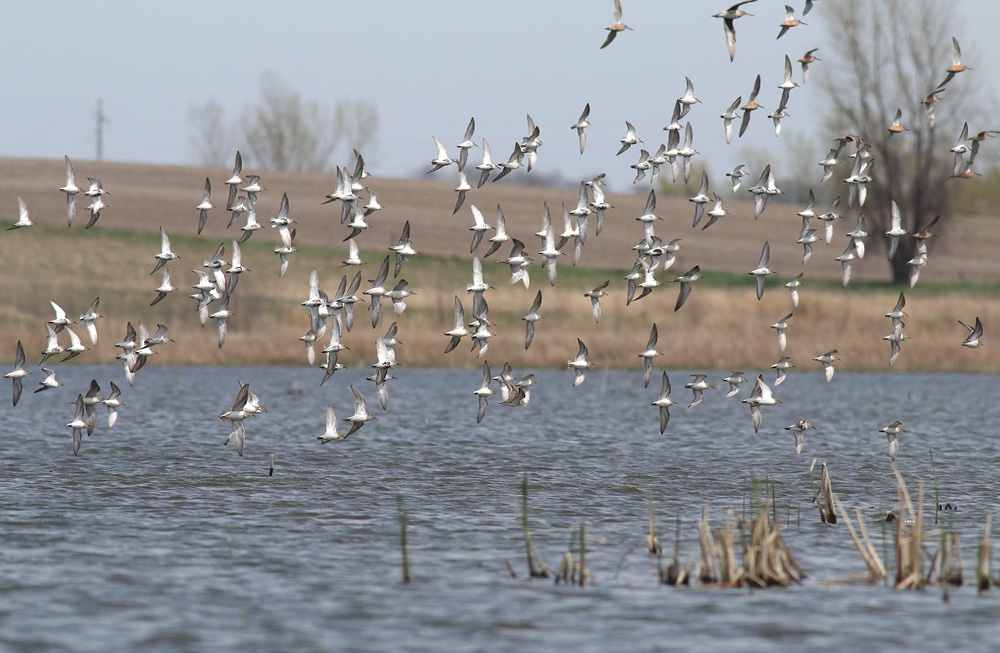
Latitude 43° 34' 20.43" North, Longitude 97° 7' 37.12" West
Weisensee Slough (also labeled as "Englehardt Slough" on a number of map and online sources) is a large wetland area on the far western edge of Minnehaha County, right along the border with McCook County. 263rd Street bisects the wetland, and offers wonderful views directly from the road. Weisensee is a classic prairie pothole depressional wetland, with sometimes extreme fluctuations of water levels dependent upon recent weather and climate conditions. In recent years it has gone from being almost completely dry and dominated by upland weeds, to being a large body of open water that floods surrounding fields and covers the main road.
It always holds birds, but the species depends upon conditions. I've seen Weisensee flooded after the melting of heavy winter snows, with water covering 263rd street and water probably 12-15 feet deep in parts of the slough. In such open water conditions it's a haven for all kinds of waterfowl, with plenty of water depth to support diving ducks and cormorants. When conditions are like this, most of the wetland vegetation is flooded out, and open water conditions prevail. With the water rising and expanding the size of the slough, surrounding farm fields may be flooded, creating shallow water habitats that can be absolutely spectacular for shorebirds (see photos below). During the spring and fall migrations, Weisensee is generally the location I most often check out if I'm looking for shorebird species, and this includes species that are usually difficult to find in southeast South Dakota. I've seen Piping Plover, Ruddy Turnstone, Sanderling, American Golden Plover, and many other species here.
Intermediate conditions are a mix of open water patches, and often, some of the most extensive cattail marshes in the vicinity. If conditions have been relatively stable for a year or two, vegetation growth in the shallows puts a damper on some of the shorebird activity that occurs in years with fluctuating water levels. However, the cattail marshes offer habitat for species such as American Bittern, Marsh Wren, and Yellow-headed Blackbird, as well as the typical dabbling ducks that nest in this part of the state. Black Terns can often be seen here, and Black-crowned Night Herons sometimes haunt the cattails.
When dry conditions prevail, water levels drop, and open water may be hard to find. In these conditions, the vast majority of the slough may be covered with wetland vegetation. Without periodic moisture, that water may almost disappear entirely. There have been years where little water can be found in Weisensee Slough, where even the cattail marshes succumb to dry conditions, and the depression becomes a vast expanse of weedy, dryland vegetation growth. These aren't common conditions, but when they occur at the end of a hot and dry summer, the early fall birding can be spectacular for migrating sparrows that are taking advantage of all the weed seeds and cover.
Rarely will Weisensee disappoint. The species may change as conditions change, but it always seems to be a "birdy" area. Some photos of the area are shown below.
Dunlin, Baird's Sandpipers, and other species flying above Weisensee Slough. The photo below shows some of the most common conditions at Weisensee, with considerable open water but with extensive wetland vegetation around the edges of the slough.

Hudsonian Godwits and Long-billed Dowitchers take flight over Weisensee Slough. When conditions are right during the spring migration, it's not unusual to crest the hill to the east of Weisensee and be greeted by the sight of literally thousands of shorebirds covering the slough.
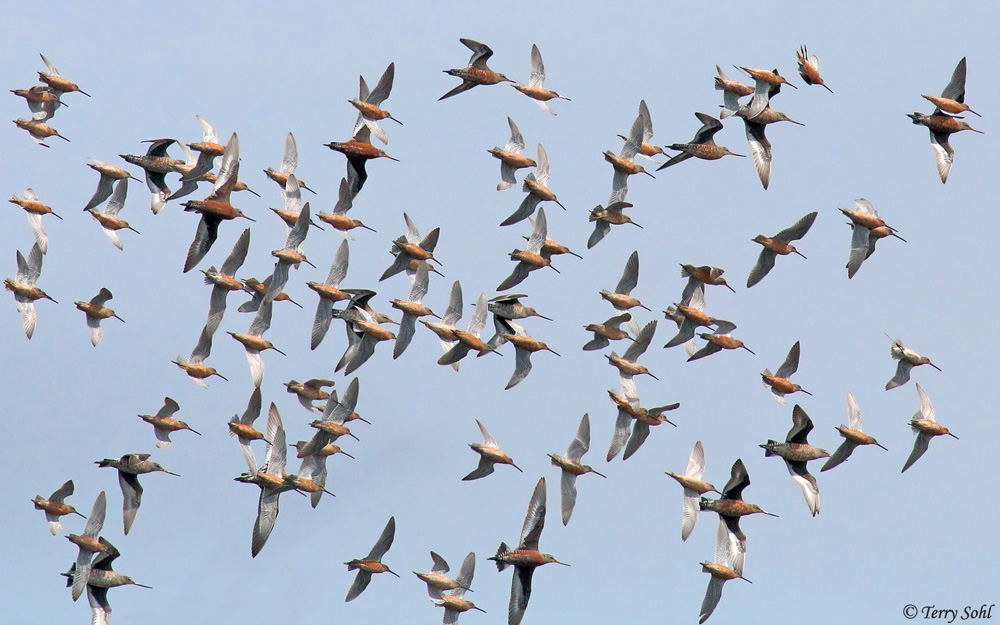
Migrating waterfowl on Weisensee Slough. This was during "typical" Weisensee conditions, with large expanses of relatively shallow water attracting hundreds of dabbling ducks and other species.
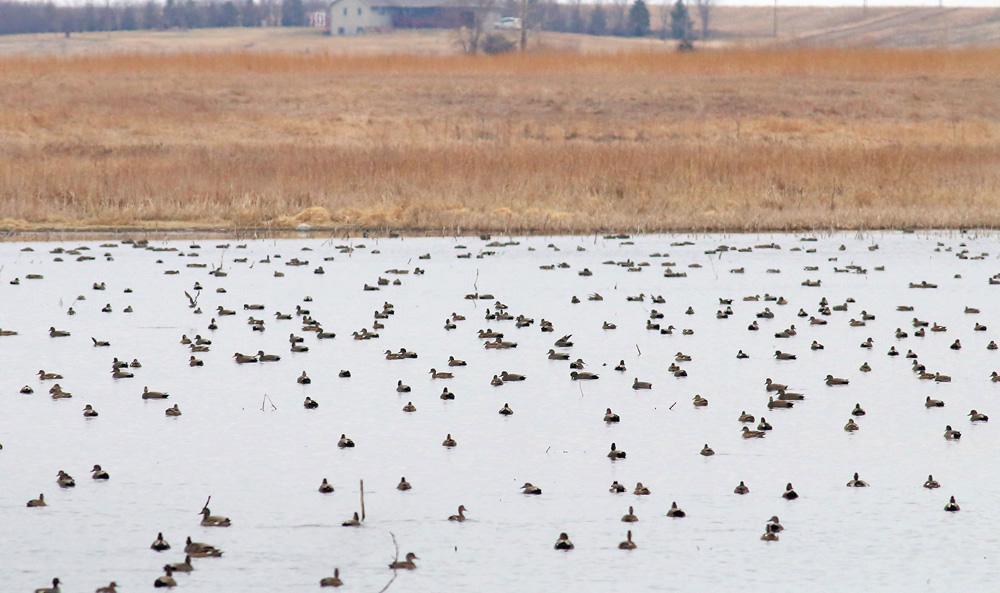
A view towards the east along 263rd street. Yes, that's the road under quite a bit of water. This is the most extreme I've seen high-water conditions at Weisensee, during the early spring of 2019. This year we had a severe winter with a lot of snowfall, and also had significant late winter rains that led to flooding throughout the region. With the water this high, the winter ice cover and break-up tore up all the extensive cattail marshes of Weisensee, with the wind blowing around great rafts of floating dead vegetation. The effect here makes it look like a cattail marsh has been growing in this location for years, but in fact all the dead cattails seen covering the road are floating and moving around with the wind. In these very high water conditions, there's plenty of water to support diving ducks and cormorants, but also very shallow margins along the flooded fields that often hold extremely high numbers of migrating shorebirds.
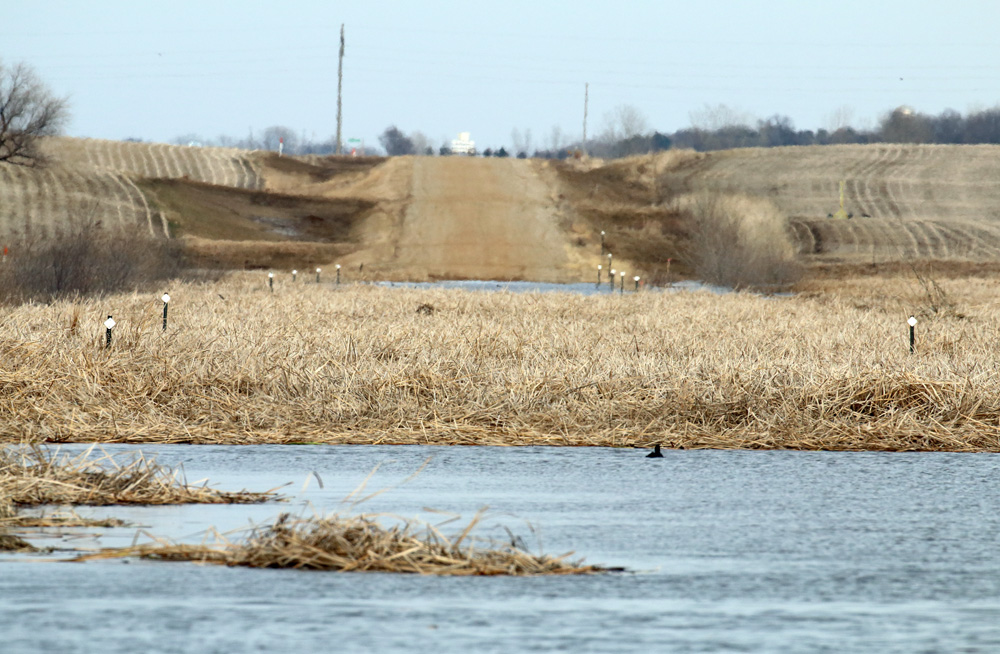
American White Pelicans flying over Weisensee Slough. They're absent from the slough during dryer periods when the water is too shallow (or absent), but in typical or wetter conditions you can often see them feeding at the slough in migration.
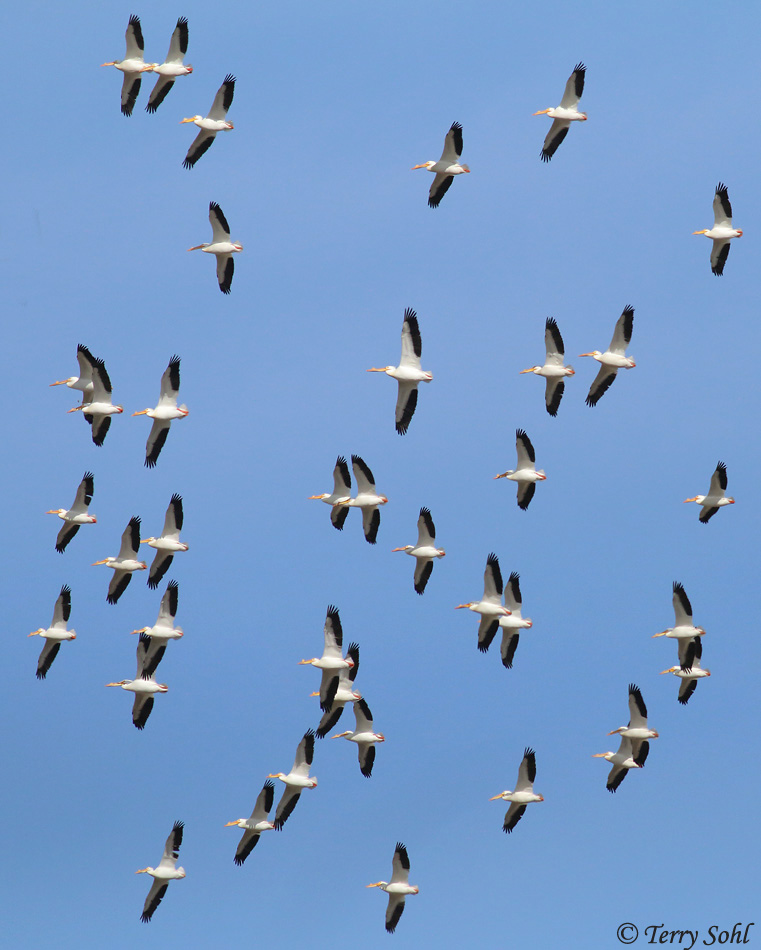

Custom Search
|
SOUTH DAKOTA BIRDS AND BIRDING - LOCATIONS OF WEBSITE VISITORS
 |
Please mail any comments/suggestions/additional links for this page to: Terry L. Sohl